Writing blog post introductions is hard. There are 600+ million blogs out there, and plenty of them are competing for your audiences. How do you stand out?
You need to produce a well-written, reader-oriented and compelling introduction. When done right, it can uplift your entire piece and, with that, even generate more traffic.
It’s easier than you think. You only need a few ingredients:
- Grab the reader’s attention
- Touch on their main pain points
- Give a clear idea about what to expect from your piece
How does it all come together? This article will answer that through 11 examples of awesome introductions and best practices. You can settle on your favorite or mix different techniques to create your own style.
Before diving in, you should know: You can’t write a good blog post intro if you don’t know your audience, so make sure to do your research first!

Get Your Blog Post Introductions Examples Bundle
Plus, join our email list to stay up to date.
Success! Your download should start shortly. Or you can download it manually here.
Table of Contents
- 1. Slay Your Opening Sentence
- 2. Connect with the Reader Through a Shared Problem
- 3. Know Your Reader’s Psychology
- 4. Show Them the Value of Your Post
- 5. Cover the 5 Ws in an Interesting, Non-Info-Dumping Way
- 6. Ask a Compelling Question
- 7. Use Engaging Quotes
- 8. Use Storytelling Techniques
- 9. Perfect the Length of Your Introductions
- 10. Add a Surprise Factor or Controversial Element
- 11. Don’t Be Afraid to Be Bold
1. Slay Your Opening Sentence
Opening sentences are an art form on their own. They must be interesting and concise while also providing a snapshot of the tone and general appeal of the rest of the article. Users these days only spend about 37 seconds skimming through the entire post. Grabbing their attention at the start is crucial.
If you can nail this, you’ll have no problem hooking your readers and getting them to stick around for the whole ride.
Here are a few tricks to an interesting first sentence:
- Start with a question
- State a problem (a.k.a the PAS method — Problem Agitate Solution)
- Use a metaphor or comparison
- Start with a story
- Lead with a statistic
- Make a bold/controversial statement
- Start with a quote
- Establish the groundwork for future pacing
In the below example, “What do content marketing and road trips have in common?” works well. The question immediately puts a visual image in the reader’s head.
Another reason is relatability. Any hardened marketer reading the above question will start putting two and two together before even moving on to the next sentence. Content marketing is a lot like a lengthy road trip!
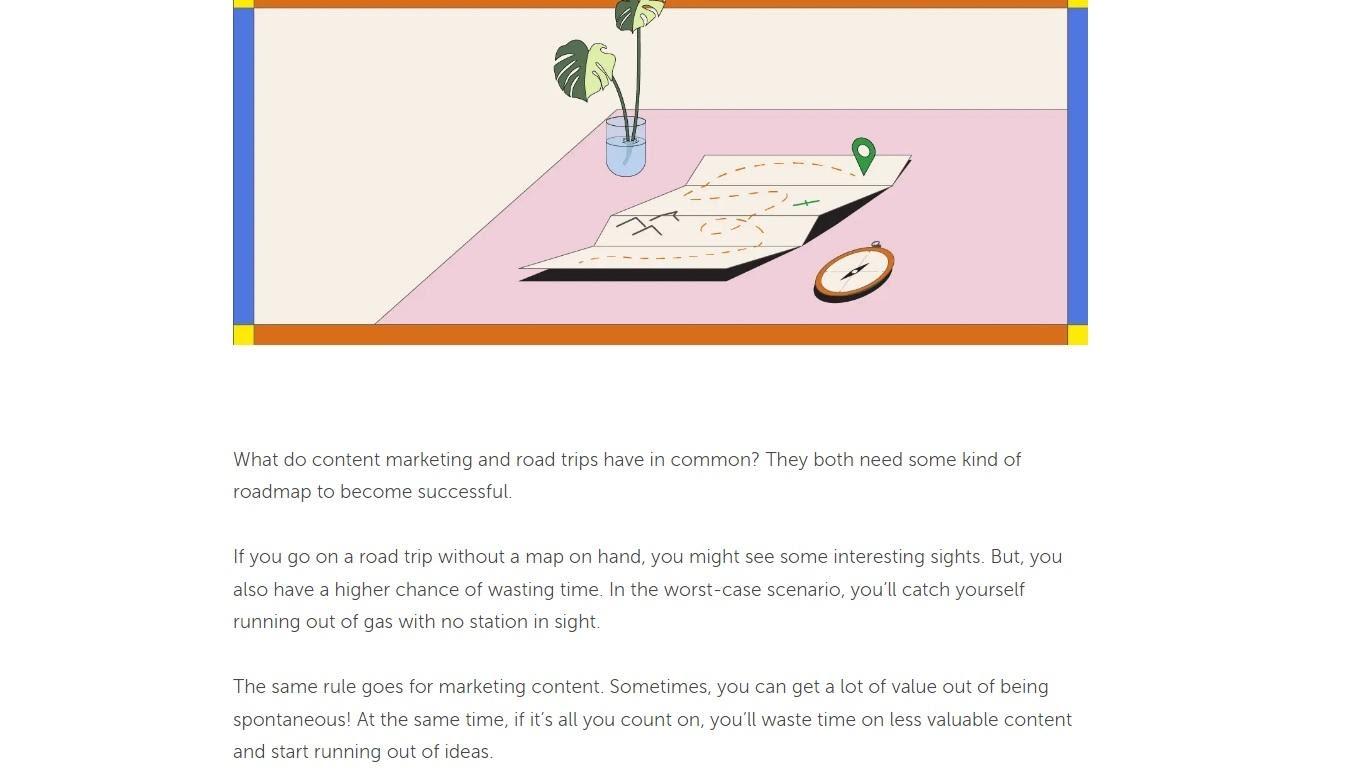
CoSchedule
2. Connect with the Reader Through a Shared Problem
Your readers read your blog because they want to learn something or find a solution.
Introduce your post by showing them that you understand their pain and can offer a remedy. The best way to do this is by stating the problem, then validating the reader’s concerns with cold, hard statistics. Statistics are an objective way to present proof to your statements.
By establishing common ground early, you’ll make it easier for the reader to trust you and stay engaged throughout the post.
You can make your stats interesting in a few different ways:
- Add an impressive growth stat (“Instagram has reached XX million users”)
- Research a dollar-based stat (“Most bloggers make $X,XXX per month blogging”)
- Find a stat that shows how many others are dealing with the same problem (“XX% of marketers also struggle with budgeting”)
- Use two stats against each other as a comparison (“XX% of writers swear by using marketing personas, while XX% of customers want more personalization”)
Here’s an example introduction by Expadi.io and a breakdown of their copy. They use an impressive growth stat, emphasize with the reader and show concern about their problem (that LinkedIn outreach is changing).
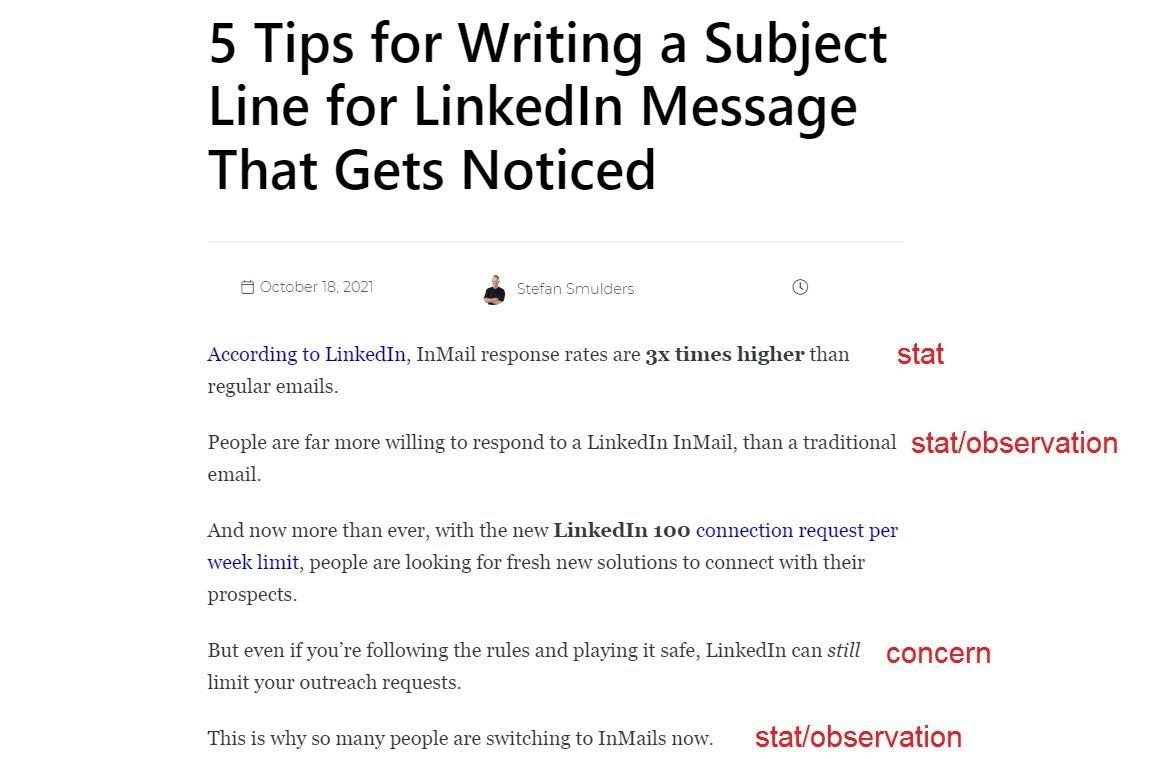
Expandi.io
3. Know Your Reader’s Psychology
Word on the street is that empathy is the new data in digital marketing. If you can successfully generate emotions from the start, then your blog post will be memorable.
Empathy, FOMO (Fear of Missing Out), excitement, and even frustration are powerful elements to use here.
Wield a statistic (FOMO). Show them a stat about a percentage of your customers who are already successfully doing this trick. Or already making money doing this tactic.
Serialize the blog post (FOMO). Add a disclaimer in the introduction to show where they are in the series (for example, “This blog post is part 4 of our 9-part series”). Wherever they are, they will not want to miss out on any previous or upcoming pieces.
Mention your community (FOMO). Including a note about your community and how they usually consume your content (“Due to popular demand in our Facebook group…”) will induce FOMO and strengthen your image as an authority on the topic.
Start by cheering them on (Excitement). Whichever niche you’re in, it’s not all stress and gloom out there. People do get excited about projects. Add a bit of excitement to the intro (“Are you SO ready to travel again?”).
Empathize with the audience (Empathy). It’s a great way to say that the reader is not alone. Others are in the same boat, too, dealing with the same struggles. See an example below from an article on shopping cart abandonment.
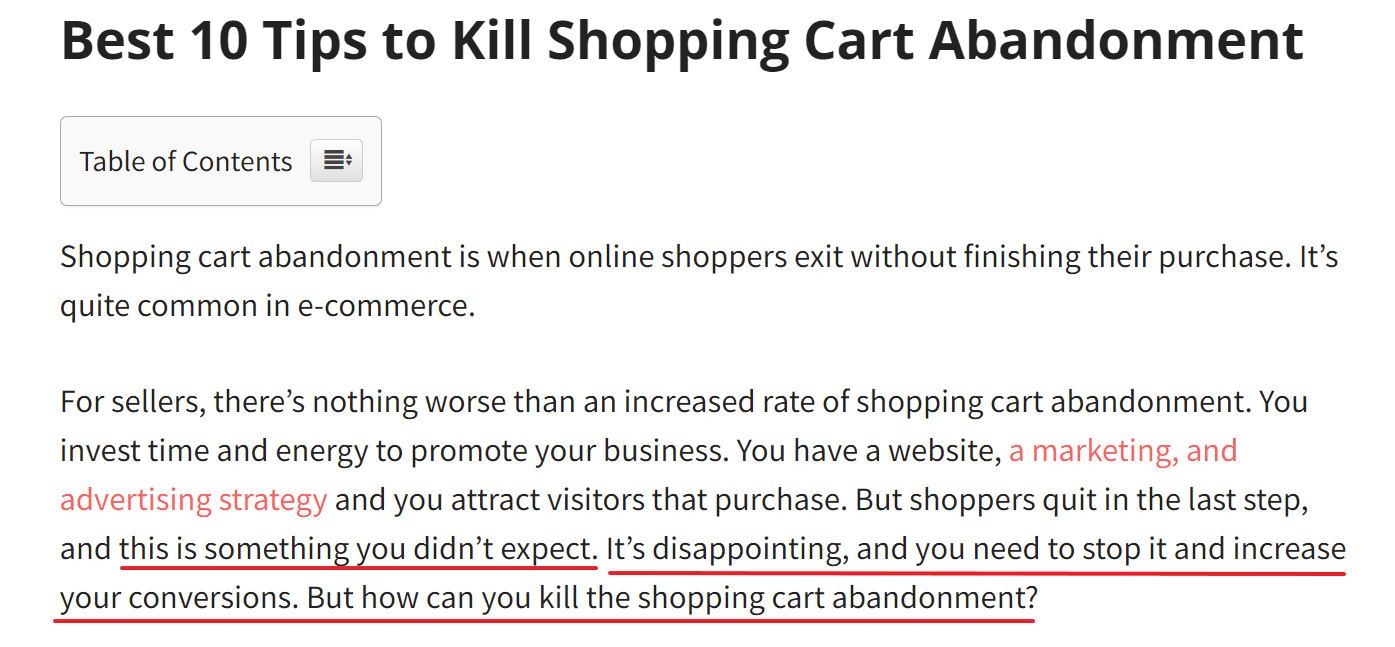
outgrow.co
Pro-tip: Don’t know the most common concerns for your audience? Build a survey form on your website to find out! You can use the answers not only for blog post introductions but also throughout your marketing strategy.
4. Show Them the Value of Your Post
A blog post’s first impression matters. You only have a few seconds to capture the readers’ attention when they load a post. If the value of your content is not immediately clear, you’ll lose them.
Show them that sticking with your blog is worth their time by promising something that the reader wants. This means providing a clear list of exactly what is covered in your piece, the possible results, and what they can learn from them.
Here’s a simple formula you can use to set up a similar introduction:
“In this article, you’ll learn about [content topic] and how to [secondary content topic] in order to achieve [results].”
This formula is best used in combination with other introduction styles (for example, a statistic + empathy + value-add technique).
Uxpressia uses this value-listing technique and then cleverly throws in a call-to-action in the end.
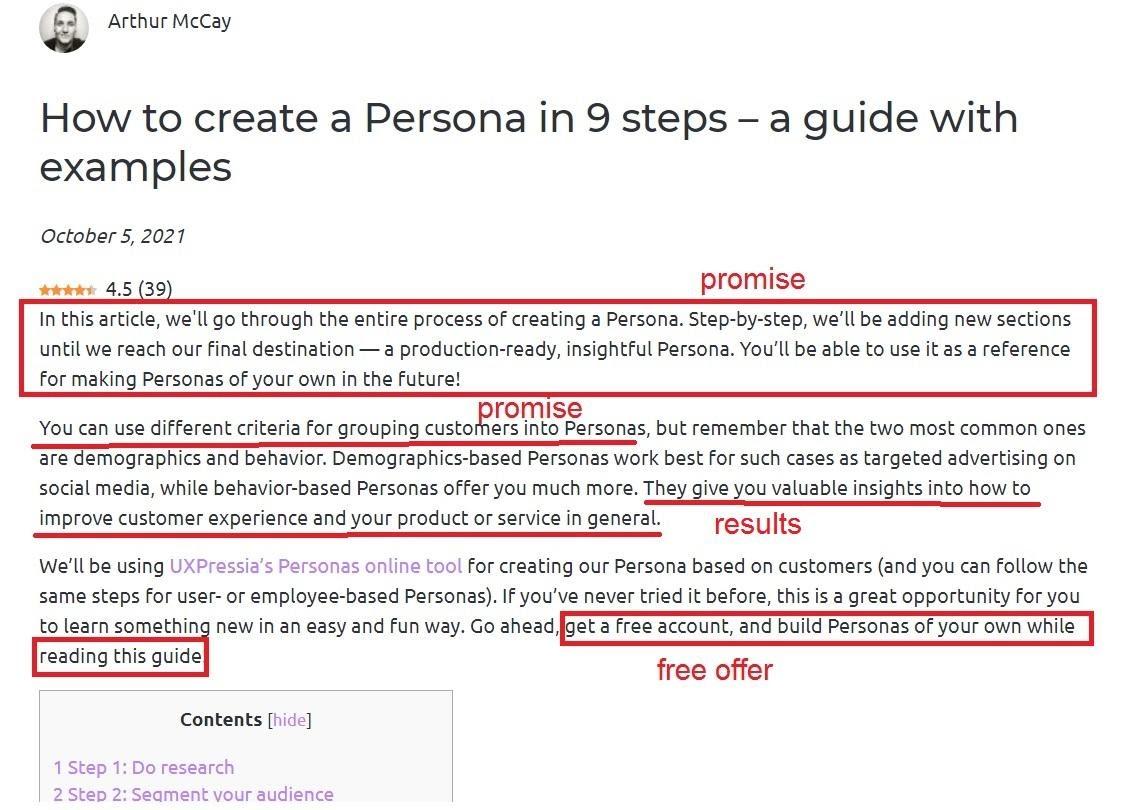
Uxpressia
5. Cover the 5 Ws in an Interesting, Non-Info-Dumping Way
The 5 Ws of marketing will never go out of style. They consist of the following questions:
- Who?
- What?
- When?
- Where?
- Why?
You can work these into the introduction of your blog post by thinking about how they apply to the topic at hand.
For example, if you’re writing a blog post about budgeting, your 5 Ws might be:
1. Who is this post for?
2. What are some of the main challenges people face when budgeting?
3. When is the best time to start budgeting?
4. Where can people find helpful resources when it comes to budgeting?
5. Why is budgeting important?
By answering these questions in an interesting way, you’ll set the tone for the rest of the post and make sure your readers are engaged from the very start.
Pro-tip: Keep it short! No more than 2-3 sentences should represent each “W.” Otherwise, you risk running your introduction too long.
6. Ask a Compelling Question
Starting a blog post intro with a question is a great way to engage the reader. A well-formed, creative query captures interest and provokes more questions.
A question is also a great way to humanize your brand. For the reader, it will feel like they’re joining you on a journey to discover the answer. It’s a great trick to use if you want your article’s tone to come off as friendly.
In short, the reader will want to keep reading to find the answer.
Here are a few ways you can form your question:
- Open-ended question (best to ask the reader about their current situation — see example below)
- Rhetorical question (“Would there still be content if all marketers just quit one day?”)
- Yes/no question (“Have you ever encountered an analytics anomaly?”)
In a previous CoSchedule guide, I used several questions to keep up the reader’s interest.
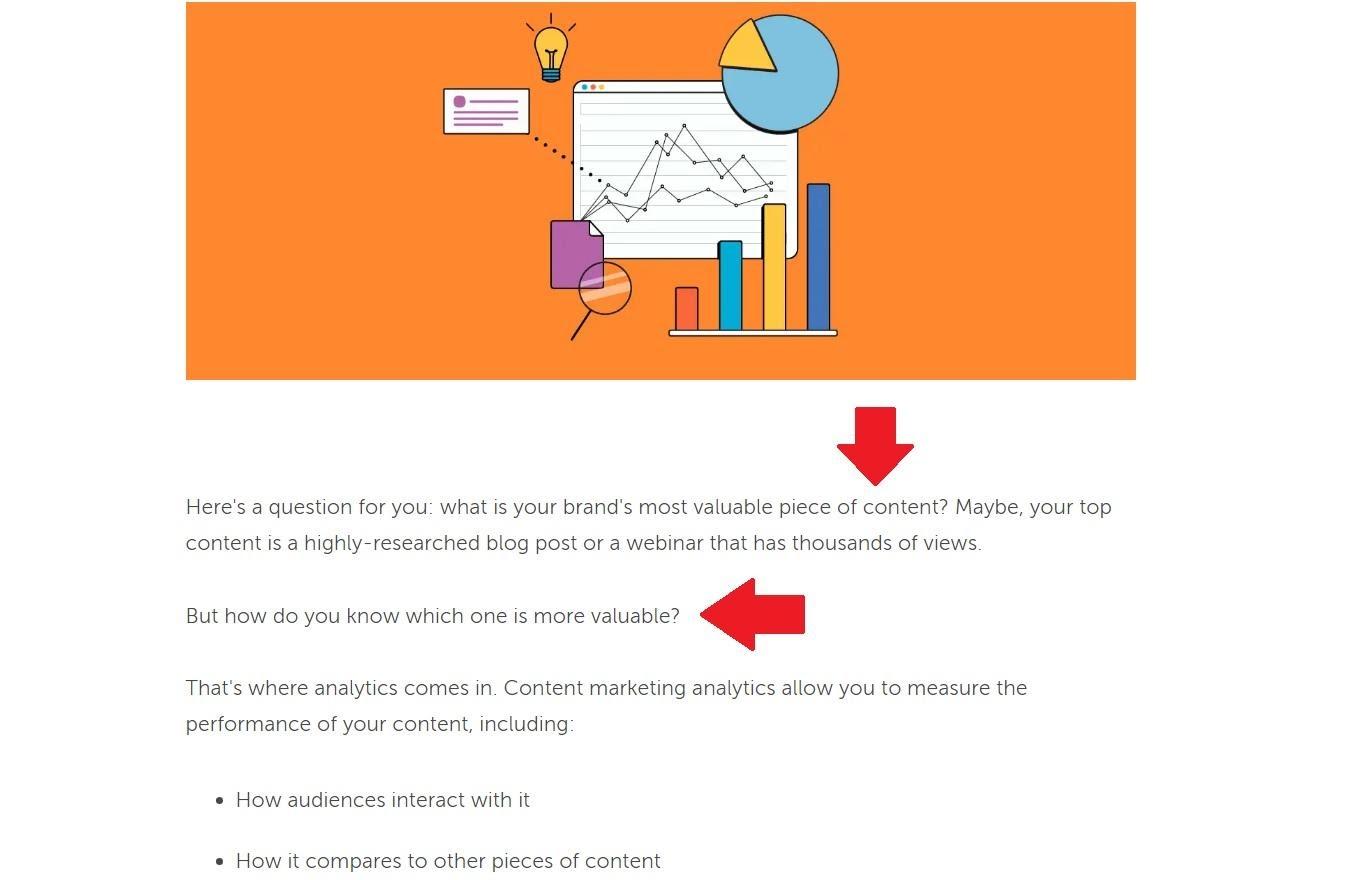
CoSchedule
Pro-tip: If relevant, answer the question in the blog post’s body and summarize it in the conclusion, too.
7. Use Engaging Quotes
You can start your blog post with a quote to kick things off. Whether it’s a well-known quote, or a more unknown one, readers will be intrigued.
Why?
Because with a quote, it’s not just a single author tooting their horn. It’s a neat device to lend a more convincing tone to your introduction.
However, be careful:
- If you use a quote from an obscure or irrelevant source, it can be a turn-off for your readers
- If you use a super popular quote from a well-known figure, it will run the risk of sounding cliché (think: “content is king”)
The sweet spot?
A somewhat-commonly known quote from a relevant or authoritative source. Bonus points if it’s a brand-new quote.
For example, in a previous CoSchedule post, I used the following quote.
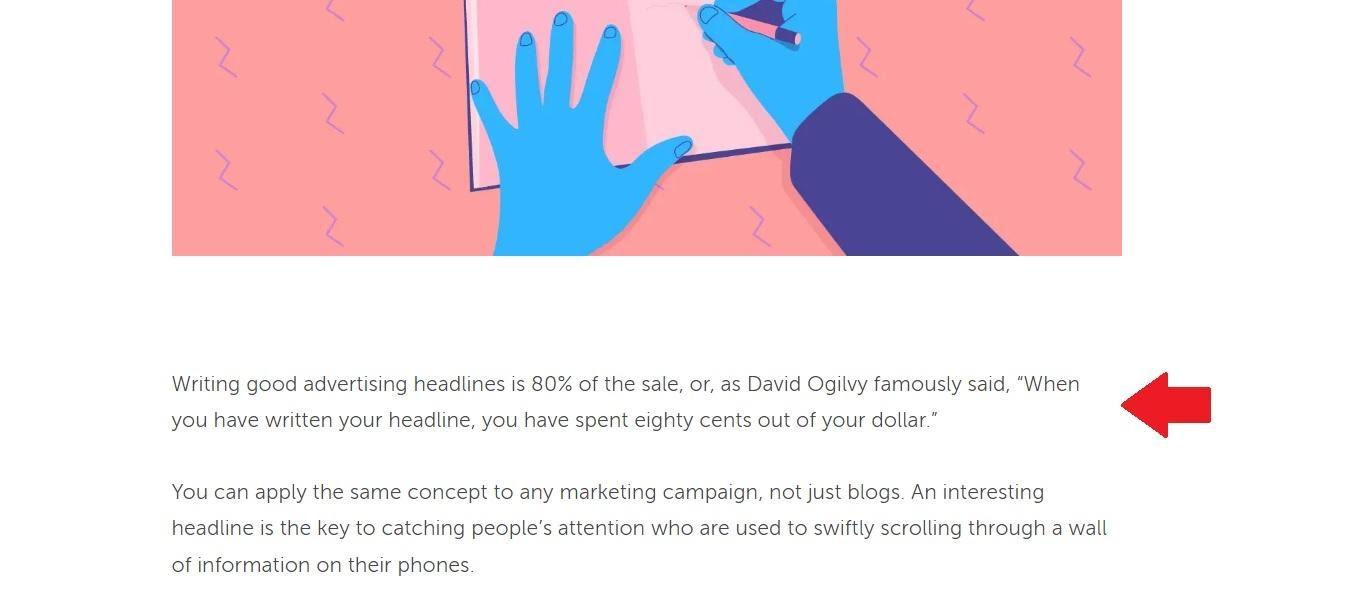
CoSchedule
8. Use Storytelling Techniques
A personal story is a great way to lead the reader into the journey they’re about to take.
A well-crafted story can:
- Show that you understand their point of view
- Make it easier for readers to learn what they need to know
- Help build a relationship with your readers
- Help readers visualize what you’re saying
Ways to make your story great:
- Write about a real-life event that happened to you
- Tell them about a great anecdote that happened to a friend of yours
- Make up a hypothetical scenario
- Ensure that your story has a takeaway that’s relevant to your blog post
Ross Simmonds, from Foundation, is excellent at starting his posts with stories. He’s proof that there’s a way to connect what’s happening in the world right now with a business case study—and make it entertaining. See the example below.
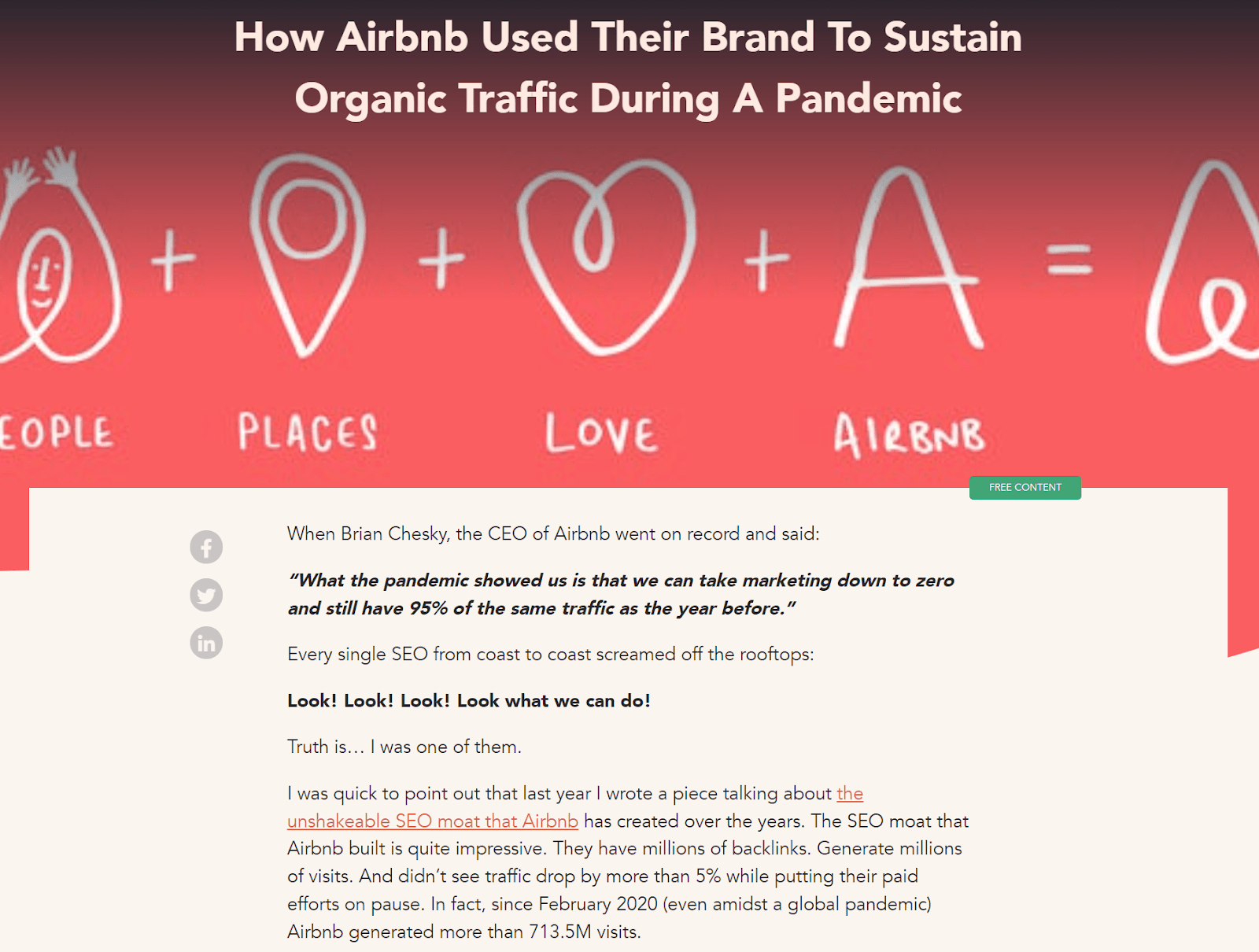
Foundation
9. Perfect the Length of Your Introductions
A good introduction doesn’t need a gazillion words. Make sure your intro is short and sweet to keep your readers hooked.
Just remember “KISS”: Keep It Short and Sweet. Your intro should also fall between 100 to 200 words in total.
Here’s a general formula you can use when looking to write short and succinct blog introductions:
- Statement or question about the topic (one sentence)
- Statistic or story (2-5 sentences)
- Emphasis on why this topic is important (1-2 sentences)
- Promise value to the reader (1-2 sentences)
- Optional: encourage the reader to get started (“Let’s jump in!”)
Short sentences (5-6 words) are the best way to go because it is easy to read and process them fast.
10. Add a Surprise Factor or Controversial Element
Using a formula like the above examples is always a safe bet. But what if you want to go against the grain?
It’s absolutely possible.
Opening with a controversial statement fuels the reader’s curiosity and drives them to want to read more.
What are some controversial elements or surprise factors you can apply here?
- An unpopular, almost incorrect statement (see an example below from Marketo)
- An unexpected request (“Do NOT read this article.”)
- A very surprising statistic
- A statement with strong emotional or power words (“There’s a grave mistake that content marketers make daily.”)
- IF your brand allows: even some swearing!
Pro-tip: while this technique turns heads easily, you also run the risk of wandering into clickbait territory. Refrain from sensationalizing your statements and you should be good.
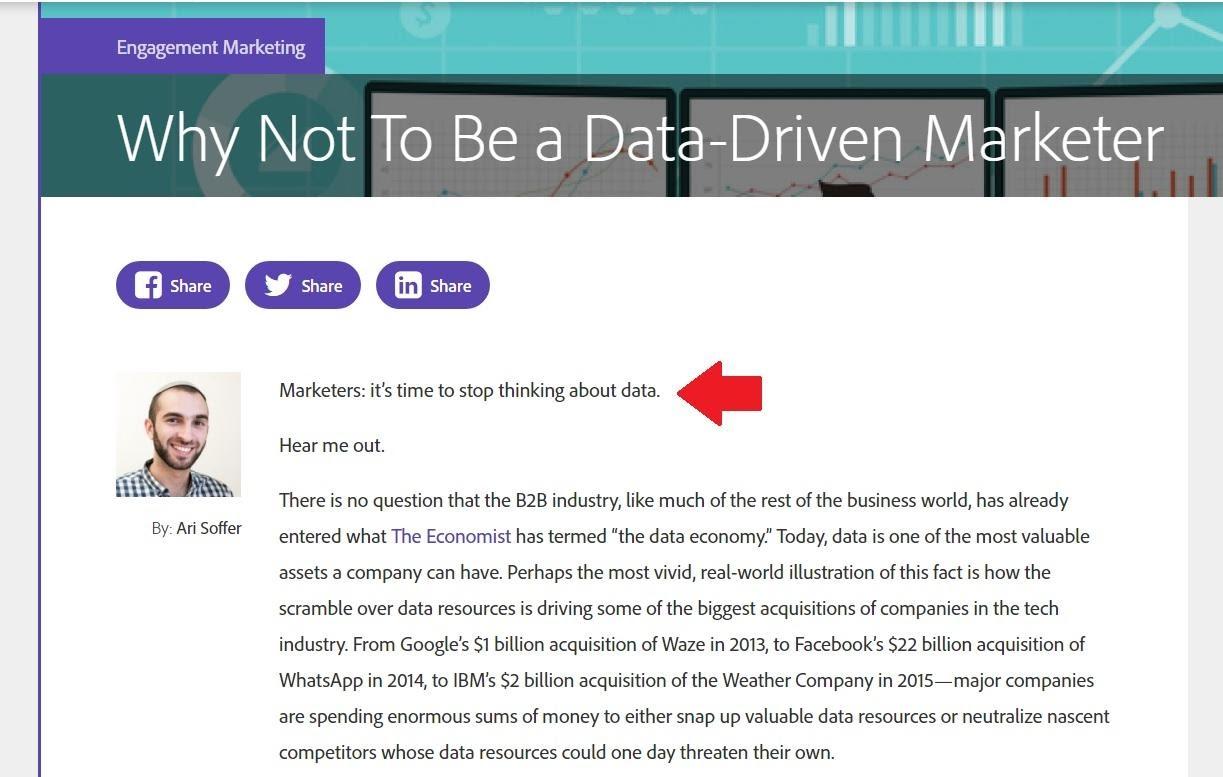
Marketo
11. Don’t Be Afraid to Be Bold
Want to go even further than using controversial elements? Go outside the norm and start your article with a meme, GIF or an image.
At the very least, your blog post intro will be different from others.
Using visual content can provide a ton of value to your reader without you having to write anything at all. So try experimenting with different visual mediums and get creative! Pop culture references are a great way to add a sense of fun to your intro without trying to come up with some witty text.
Pro-tip: if you have audiences on multiple platforms, you can use these visuals when repurposing or promoting content.
Below is an example of an introduction that features a meme. Take note of the strategic font formatting, as well (bold letters help make a point).
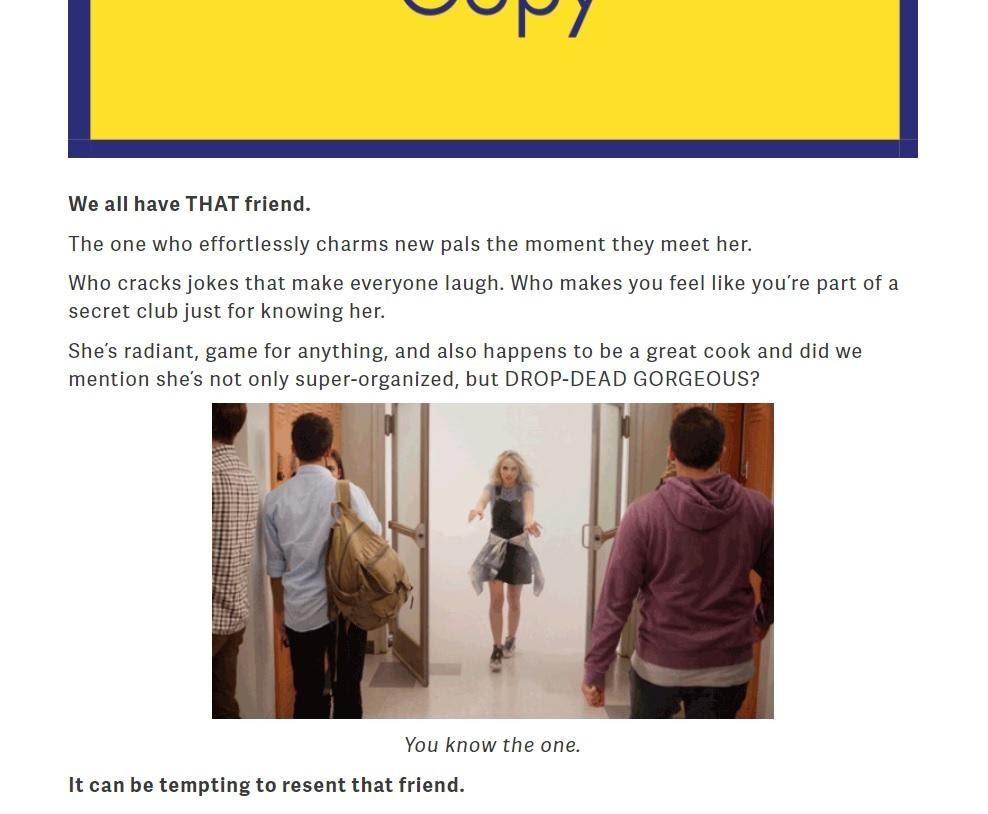
Punchline Copy
Which Blog Post Introduction Will You Try Next?
Your blog post’s introduction plays an important role in whether or not your readers will stick around, so make sure you spend time perfecting it.
In this article, you have discovered 11 ways to write a great blog post introduction. You can either use just one type or mix and match different approaches.
Remember to keep it short and sweet, stimulate your reader’s curiosity, and demonstrate what they’ll gain from reading your article.
Now, get out there, and write your next captivating introduction. Good luck!
The post 11 Tips & Best Practices for Writing a Blog Post Introduction appeared first on CoSchedule Blog.




